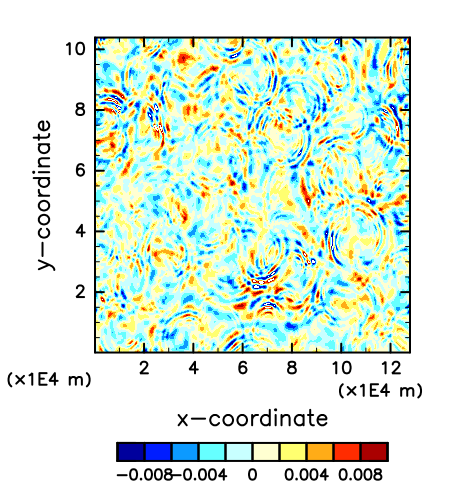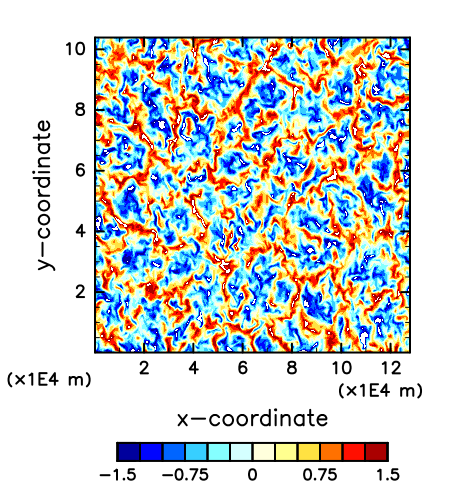Numerical study of the convection structure in Venus’ atmospheres
JAXA Supercomputer System Annual Report April 2017-March 2018
Report Number: R17EACA14
Subject Category: JSS2 Inter-University Research
- Responsible Representative: Ko-ichiro Sugiyama, National Institute of Technology, Matsue College
- Contact Information: Ko-ichiro Sugiyama sugiyama@gfd-dennou.org
- Members: Ko-ichiro Sugiyama, Hiroki Ando
Abstract
Our purpose is to support the observation performed by AKATSUKI (Venus Climate Orbiter) by developing a numerical fluid dynamics model (cloud resolving model) and providing a lot of numerical simulation data. The motion of Venus’ cloud-level convection and the propagation of gravity wave driven by convection obtained by our numerical simulation are very useful to analysis the cloud morphology at various altitudes and characteristics of gravity wave obtained by AKATSUKI. By comparing our numerical simulations data and the observation data of AKATSUKI, it is expected that atmospheric structure of Venus’ cloud-level will be more clearly understood.
Reference URL
N/A
Reasons for using JSS2
Supercomputer is used for developing and running our cloud resolving model. To reproduce the structure of convective motion and gravity wave propagation, it is necessary that the resolution of the model is set to be several tens to several hundred meters. To avoid the influence of the computational boundary and to compare with AKATSUKI’s data, horizontal region of hundreds to thousands of kilometers is required. The numerical simulations with such high resolution and wide computational region can be performed using supercomputer only.
Achievements of the Year
We proceed further analysis of our previously performed two-dimensional simulation and find that the altitude at which gravity wave breaking occurs and amplitude of gravity waves are consistent with those obtained by the observational results of radio occultation measurements. We also start to perform a numerical simulation in order to investigate a possible three-dimensional structure of Venus’ cloud-level convection and propagation of gravity wave driven by the convection. The preliminary results show that the convective motion and gravity wave propagation are obtained successfully (Fig.1, 2).

Fig.2: Horizontal cross-section of vertical velocity associated with gravity wave at 59 km altitude.
Publications
N/A
Usage of JSS2
Computational Information
- Process Parallelization Methods: MPI
- Thread Parallelization Methods: N/A
- Number of Processes: 128 – 1024
- Elapsed Time per Case: 100.00 hours
Resources Used
Fraction of Usage in Total Resources*1(%): 0.03
Details
Please refer to System Configuration of JSS2 for the system configuration and major specifications of JSS2.
| System Name | Amount of Core Time(core x hours) | Fraction of Usage*2(%) |
|---|---|---|
| SORA-MA | 226,607.97 | 0.03 |
| SORA-PP | 0.00 | 0.00 |
| SORA-LM | 0.00 | 0.00 |
| SORA-TPP | 0.00 | 0.00 |
| File System Name | Storage Assigned(GiB) | Fraction of Usage*2(%) |
|---|---|---|
| /home | 356.71 | 0.25 |
| /data | 3,287.00 | 0.06 |
| /ltmp | 1,302.08 | 0.10 |
| Archiver Name | Storage Used(TiB) | Fraction of Usage*2(%) |
|---|---|---|
| J-SPACE | 0.00 | 0.00 |
*1: Fraction of Usage in Total Resources: Weighted average of three resource types (Computing, File System, and Archiver).
*2: Fraction of Usage:Percentage of usage relative to each resource used in one year.
JAXA Supercomputer System Annual Report April 2017-March 2018



